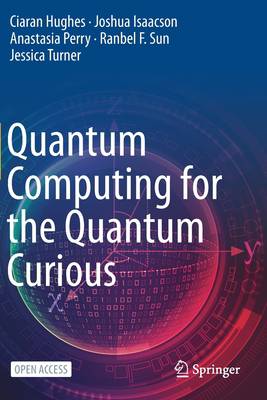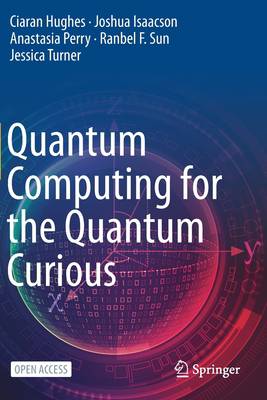
- Afhalen na 1 uur in een winkel met voorraad
- Gratis thuislevering in België vanaf € 30
- Ruim aanbod met 7 miljoen producten
- Afhalen na 1 uur in een winkel met voorraad
- Gratis thuislevering in België vanaf € 30
- Ruim aanbod met 7 miljoen producten
Zoeken
Quantum Computing for the Quantum Curious
Ciaran Hughes, Joshua Isaacson, Anastasia Perry, Ranbel F Sun, Jessica Turner
Paperback | Engels
€ 42,45
+ 84 punten
Uitvoering
Omschrijving
This open access book makes quantum computing more accessible than ever before. A fast-growing field at the intersection of physics and computer science, quantum computing promises to have revolutionary capabilities far surpassing "classical" computation. Getting a grip on the science behind the hype can be tough: at its heart lies quantum mechanics, whose enigmatic concepts can be imposing for the novice.
This classroom-tested textbook uses simple language, minimal math, and plenty of examples to explain the three key principles behind quantum computers: superposition, quantum measurement, and entanglement. It then goes on to explain how this quantum world opens up a whole new paradigm of computing.
The book bridges the gap between popular science articles and advanced textbooks by making key ideas accessible with just high school physics as a prerequisite. Each unit is broken down into sections labelled by difficulty level, allowing the course to be tailored to the student's experience of math and abstract reasoning. Problem sets and simulation-based labs of various levels reinforce the concepts described in the text and give the reader hands-on experience running quantum programs.
This book can thus be used at the high school level after the AP or IB exams, in an extracurricular club, or as an independent project resource to give students a taste of what quantum computing is really about. At the college level, it can be used as a supplementary text to enhance a variety of courses in science and computing, or as a self-study guide for students who want to get ahead. Additionally, readers in business, finance, or industry will find it a quick and useful primer on the science behind computing's future.
This classroom-tested textbook uses simple language, minimal math, and plenty of examples to explain the three key principles behind quantum computers: superposition, quantum measurement, and entanglement. It then goes on to explain how this quantum world opens up a whole new paradigm of computing.
The book bridges the gap between popular science articles and advanced textbooks by making key ideas accessible with just high school physics as a prerequisite. Each unit is broken down into sections labelled by difficulty level, allowing the course to be tailored to the student's experience of math and abstract reasoning. Problem sets and simulation-based labs of various levels reinforce the concepts described in the text and give the reader hands-on experience running quantum programs.
This book can thus be used at the high school level after the AP or IB exams, in an extracurricular club, or as an independent project resource to give students a taste of what quantum computing is really about. At the college level, it can be used as a supplementary text to enhance a variety of courses in science and computing, or as a self-study guide for students who want to get ahead. Additionally, readers in business, finance, or industry will find it a quick and useful primer on the science behind computing's future.
Specificaties
Betrokkenen
- Auteur(s):
- Uitgeverij:
Inhoud
- Aantal bladzijden:
- 150
- Taal:
- Engels
Eigenschappen
- Productcode (EAN):
- 9783030616038
- Verschijningsdatum:
- 23/03/2022
- Uitvoering:
- Paperback
- Formaat:
- Trade paperback (VS)
- Afmetingen:
- 156 mm x 234 mm
- Gewicht:
- 244 g

Alleen bij Standaard Boekhandel
+ 84 punten op je klantenkaart van Standaard Boekhandel
Beoordelingen
We publiceren alleen reviews die voldoen aan de voorwaarden voor reviews. Bekijk onze voorwaarden voor reviews.











